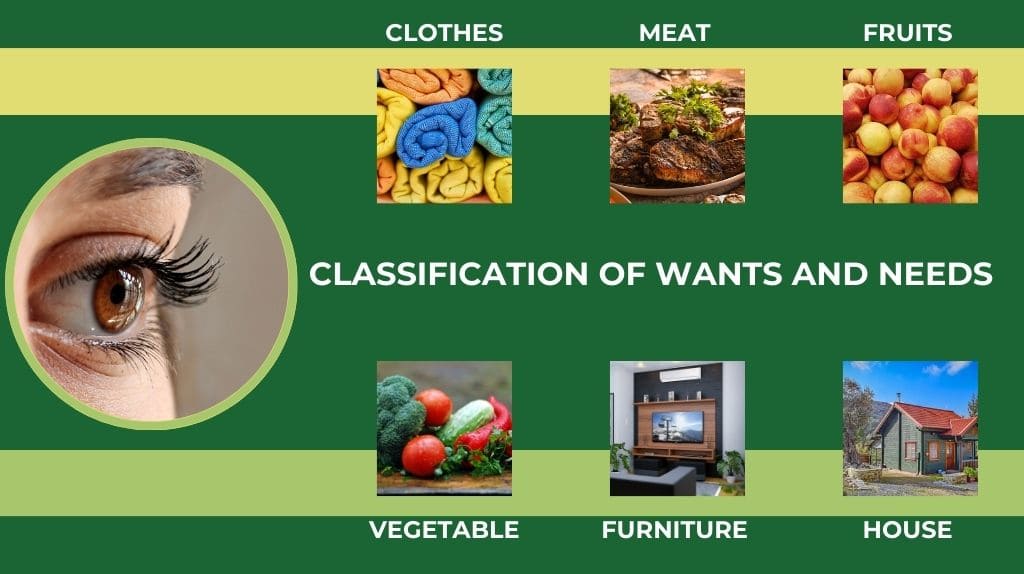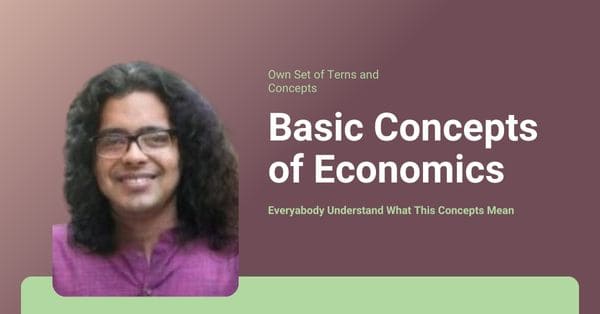Economics has its own terms and concepts. Thus, we must have a clear idea of what these concepts mean.
Value of Human Wants:
Want is the desire to achieve something and the willingness to exert effort to achieve it. Simply, want and desire mean the same. Although, in economics, want is a little more than desire. Thus,
Want = Desire to get somethings + An effort to get

This Is Important Characteristic of Wants Made in Economics
Some important features are:
- A wish for a particular good may be fulfilled: Human demand on any one thing limited. Desire for it decreases as I go. At last there comes a time when his desire becomes saturated.
- Wants for unlimited: In the era of modern civilization, human needs are increasing. But it is also true that certain people have limited needs. However, all human needs are unlimited.
- Wants are interrelated: Human needs are inter-related. The first is complementary. Because, if one wants to drink tea, they need both tea and sugar. Complementary to each other. The latter is a substitute. Some need tea and some need coffee.
- Intensity of wants may vary: Everyone’s needs are not the same. For some, luxury goods are more important, while for others, food is more important. This is especially true for poor people.
- Wants to be competitive: Wants for different products can be competitive in nature. Man will first meet those needs which he can please the most. So what is less urgent or less satisfying in its use can be done later.
- Wants are repetitive: When human needs are at a particular time. Then it is no longer in demand. There may be demand again at some point in time. For example, people buy new clothes at a festival.
- Wants are dynamic: In this ongoing social system, the continuous improvement of science and technology. This causes increasing the demand for new things in the country. For example, people are switching from black & white TV to color TV. So, wants are no longer static but dynamic in nature.
High Amazing Seen in Formation of Wants
There are basically three ways in which wants is created:
- Physical needs: It is very important for people to get food when they are hungry. And when he needs shelter, it is important to have a house near him. Thus, when people feel cold, they need warm clothes. So the feeling of physical need of people can termed as physical needs.
- Pleasant sensations: Which is not strictly speaking, physically necessary, but which was pleasant to have. Thus arises the demand for the finer things in life. For example- fine clothing, delicious food.
- Social factors: Not all a person’s desires come naturally from within himself. Changes in customs and lifestyles always create new demands. As a result, some members of a society get a more varied and colorful lifestyle. But others try to imitate it.
Classification of wants:
Human wants can divided into two broad groups- Primary wants and Secondary wants.
Primary wants: People need basic things to survive. Among which food, clothing, shelter are noteworthy.
- One wants very essential products to lead one’s life: Humans need very little food to survive. With some clothes.
- Any person wants skill enhancement products: People need adequate education, health and training facilities.
- Wants things to satisfy one’s habit: For the chain smoker, the use of cigarettes is primary wants.
Secondary wants: Human wants that arise only after the satisfaction of primary needs can called secondary wants.
- Wants for comforts: Some goods used by people in their life journey to get comfort or convenience. For example: Easy chair, washing machine, air condition, microwave etc. These benefit all people.
- Wants for Luxuries: Demand for very valuable items. Usually, rich people do it to show off their wealth. Like expensive gems or luxury motor cars etc.
All Tangible Goods Focus High Want in Economics
Generally, the language of economics means goods as tangible materials that meet people’s wants. For example from food items like rice, wheat, potatoes, meat, fish etc. From clothes to shirts, trousers, sarees etc. Besides, there are bicycles, furniture, houses, four wheels etc.
Classification of goods:
Free goods and economic goods:
Free gift means what nature has given us. For which we do not have to pay any price. For example air, we get it for free.
But economic goods mean what you have to go to the market place to get. And to buy at a price. So we need to know if any goods are free or if we have to pay any price. Let us know this through a simple example. For example, if we discuss the issue of water, we will know. In the desert we have to buy water with money whereas the water we get in the river is free goods.
Consumer Goods and producer goods:
Consumer goods are those that we consume directly. Like food items, clothing, magazines etc.
On the other hand, producer goods mean goods that are not used directly. That is, it used to make other materials. That is why it called capital goods. Various types of machines and raw materials used for production. For example, iron ore used to make steel or wood or wood used to make wooden furniture.
Whatever said, we need to understand the difference in its usage. Let’s make it more clear, let’s say sugar. It used in two ways. We use sugar while making tea at home, but we will call it consumer goods. Moreover, when confectioners use sugar to make sweets, it is again included in producer goods. Thus economics looks at the use of goods.

Private Goods and public goods:
This classification depends on the ownership of goods. If the consumer goods are used only for self. Therefore, if a single unit of private goods is used by someone, it should not be used by anyone else. Towels are another classic example.
Public goods are things that are used by a group of people. Everyone has the right to use it. For example, you can say parks, bridges, roads, etc.
Non-durable Goods and durable goods:
Here the classification of goods depends on the durability of goods. So non-durable goods are meant to be used within a short period of time. In this case, most food items considered non-durable.
On the other hand, the goods which used for a long time called durable goods. Like TV sets, refrigerators, motor cars etc.
Intermediate Goods and final goods:
Classification of such goods depends on the process of production. When something is done for the purpose of doing something else. Let’s say more openly like some parts needed to make a car. Car parts are to be understood as intermediate goods.
But when the vehicle sold to the final consumer it is final goods.
Necessaries, comfort and luxuries Goods in economics terms:
Goods which are essential for living. The whole society has enough agreement. Those objects called necessaries. Food is the most important Necessary. Thus clothing, housing considered necessities in the present society. Because in primitive times, people did not use clothes. They didn’t even have a habitable brick house in that sense.
There are some things that cannot needed for physical survival. But to keep one’s competence or to keep one’s skills alive, one needs later. For example, a player needs nourishing food. Buying books from such a teacher. Let us see again a person who addicted to cigarettes. Must for him to use cigarettes. If he uses cigarettes, his mind will be calm, it is necessary for him.
The next class is comfort which is the opposite sense of necessity. It is not very important for life. But it will be convenient. The work will proceed easily. People go here and there on foot but having a motor car will be fun and comfortable. So, it is comforting. In this civilized society it is easy to divide between necessaries and comforts.
But luxury goods are completely different. It is neither physical survival nor conventional level of comfort. The cost of such products is wasteful in nature. So, valuable or expensive things can put in the luxuries group as well.
FAQs
Q1: When are goods complementary to each other?
When separate things are inter-related. That is, there will be an interrelationship between them. For example, if someone wants to take tea, he will usually want to take sugar with the tea. Thus, his two things are being taken – tea and sugar. These types of things are complementary to each other.
Q2: Demonstration effect in consumption what do you mean?
Not always all a person’s desires come from within himself. Changes in society’s norms and lifestyles always create new demands. Hence, some members of today’s society lead more varied and colorful lifestyles. And some try to imitate it. In the language of economics, it called the demonstration effect in consumption.
Q3: Why can services be called commodities?
Commodity means that which can satisfy human needs. Commodities are of two types – goods and services. Although these services are not physically tangible, they fulfill the needs of people. Some of these functions are performed by doctors, teachers, lawyers, engineers.








